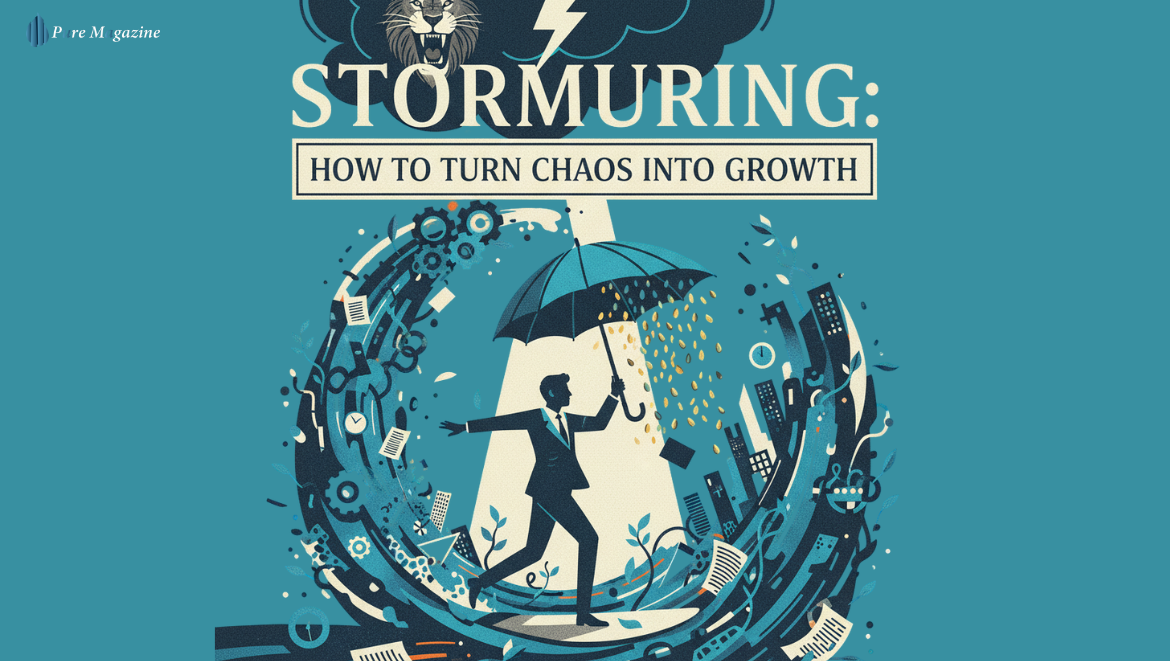Last March, my friend’s construction business got hit by a perfect storm. And I mean perfect.
Suppliers ghosted her. Three employees quit in one week. And then—because apparently the universe was feeling extra dramatic—a freak storm flooded her warehouse. Half the tools floating in water, stacks of lumber warped, invoices scattered like confetti in a hurricane.
Most people would’ve packed up and quit. She didn’t. Not even close.
She rolled up her sleeves, called in favors from scrappy local suppliers, and rewired her workflow so fast it would’ve made your head spin. Six months later, her company wasn’t just surviving. It was thriving. Leaner, stronger, and flexible enough to handle pretty much anything.
She didn’t just weather the storm. She danced in it.
That, my friends, is stormuring.
Stormuring: Not Your Typical Resilience
Resilience is nice. It’s about bouncing back. Falling, standing up, dusting off. But stormuring? It’s different.
Stormuring is about bouncing forward. It’s about using chaos as fuel instead of a wall to hide behind.
The old rules don’t work anymore. Normal doesn’t exist. Climate change is bringing wild weather. Tech shifts overnight. Markets flip in hours. Steady-as-she-goes? Forget it.
Stormuring says: The storm isn’t temporary. It’s here. So let’s dance with it.
The Brain on Chaos
Here’s the brutal truth: humans hate uncertainty. Our brains want patterns, routines, and predictability. Chaos makes us twitchy. Frustrated. Stressed.
Stormuring flips that script. It trains you to like unpredictability—or at least tolerate it. To see opportunity where everyone else sees disaster.
Think back to the early pandemic days. Restaurants shut down. Bars closed. Yoga studios went dark. But some pivoted. Meal kits, online classes, and breweries making sanitizer. Same storm. Totally different outcomes.
That’s cognitive flexibility. The ability to shift, adapt, and improvise when the rules change.
Picture a surfer on a wild, messy wave. Waves from all directions. Wind howling. But they read the water, adjust, and ride it. That’s stormuring in action.
Stormuring in Real Life
1. Business
Companies that stormure don’t pray for stability. They build “chaos-ready” systems.
- Teams that reshuffle like jazz bands depending on the tune.
- Strategies that are living documents, constantly rewritten.
- A mindset that kills bad ideas fast and isn’t afraid to pivot.
Are the businesses thriving now? They’re obsessed with results, not tradition. Old ways? Forget them. Flexibility is king.
2. Cities and Climate
Floods, heat waves, hurricanes. The old answer was bigger walls, deeper drains. But smart cities now embrace stormuring.
Green infrastructure absorbs water, cools the air, and gives people nice parks to walk in. Modular spaces, multi-use areas, adaptable systems.
The idea: design for chaos, not stability. Like nature, resilient cities are diverse, flexible, and ready for anything.
3. Personal Life
Stormuring works at home too. Missed flights. Kids sick. Deadlines looming. Life throws curveballs. Most people freak. Stormurers pivot. They ask: “Okay… now what’s possible?”
Maybe that traffic jam becomes a mini-podcast binge. Maybe a canceled flight leads to a city you’d never planned to visit. Life gets messy, yes—but also kind of fun.
How to Train Yourself to Stormure
Stormuring isn’t a magic switch. You practice it. Every day.
- Shake routines. New route to work. Coffee shop instead of home. Tiny disruptions prep you for big ones.
- Options over perfection. Brainstorm wildly. Generate paths, not one perfect solution.
- Redundancy matters. Backup plans only work if they’re genuinely different from Plan A.
- Safe chaos. Experiment with low-risk failure. Build muscle for real crises.
- Find your tribe. Chaos is lighter with people who get it. Build a crew that thrives on unpredictability.
Why Stormuring Will Matter More
The future isn’t slowing down. Chaos is baked into everything.
Tech accelerates. Climate worsens. Markets ripple in seconds. Stormuring isn’t a bonus anymore—it’s survival.
AI can help spot patterns. Smart cities will react in real time. But tools are useless without the right mindset.
Storms won’t disappear. But if you stormure, you don’t just survive. You thrive.
Key Takeaways
- Resilience bounces back. Stormuring bounces forward.
- Chaos is the baseline. Pretending otherwise wastes energy.
- Stormuring is everywhere: business, cities, and life.
- You can practice it. Tiny disruptions build big adaptability.
The storm isn’t coming. It’s already here.
You can hide and hope. Or you can learn the rhythm of the rain, lean into the wind, and ride the waves to somewhere better.
Because the future belongs to the people who dance in the downpour—not the ones waiting for calm.
FAQs
Q1. What is stormuring?
Stormuring is embracing chaos to build resilience and adaptability in business, cities, and daily life. It’s about turning disruption into opportunity, not just surviving it.
Q2. How does stormuring help businesses?
It helps businesses stay flexible, pivot quickly, and innovate during unexpected challenges like supply chain issues or market shifts.
Q3. Can stormuring improve cities and infrastructure?
Yes. Stormuring guides urban planning with adaptive systems like rain gardens, wetlands, and modular spaces that thrive during extreme weather.
Q4. How can I use stormuring in daily life?
Practice flexibility with routines, embrace small disruptions, and see setbacks as opportunities to grow and adapt.
Q5. How do I start stormuring today?
Experiment with new approaches, create backup plans, use tech to adapt faster, and connect with people who handle change well.
Visit: Pure Magazine








